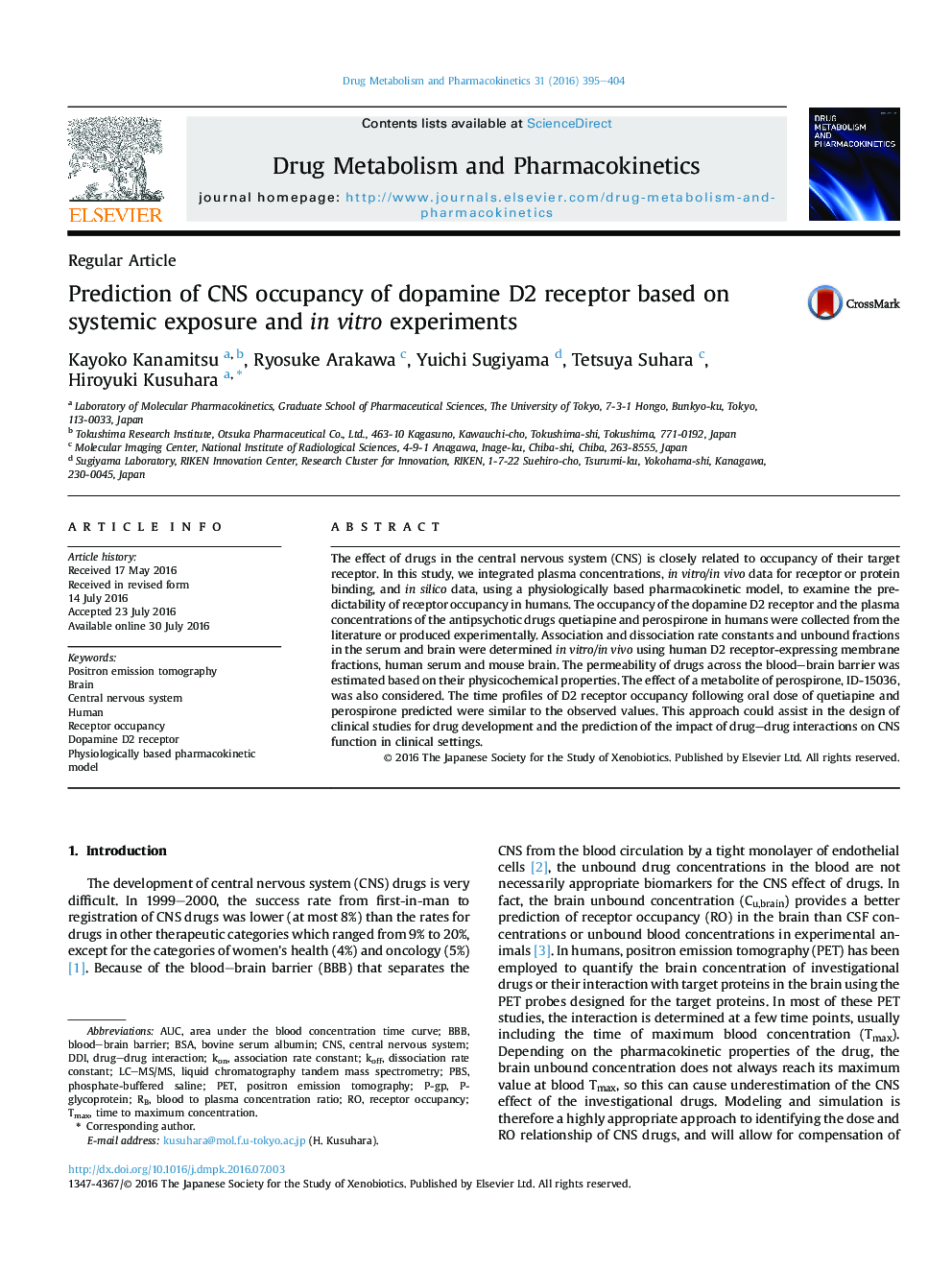| Article ID | Journal | Published Year | Pages | File Type |
|---|---|---|---|---|
| 5547158 | Drug Metabolism and Pharmacokinetics | 2016 | 10 Pages |
The effect of drugs in the central nervous system (CNS) is closely related to occupancy of their target receptor. In this study, we integrated plasma concentrations, in vitro/in vivo data for receptor or protein binding, and in silico data, using a physiologically based pharmacokinetic model, to examine the predictability of receptor occupancy in humans. The occupancy of the dopamine D2 receptor and the plasma concentrations of the antipsychotic drugs quetiapine and perospirone in humans were collected from the literature or produced experimentally. Association and dissociation rate constants and unbound fractions in the serum and brain were determined in vitro/in vivo using human D2 receptor-expressing membrane fractions, human serum and mouse brain. The permeability of drugs across the blood-brain barrier was estimated based on their physicochemical properties. The effect of a metabolite of perospirone, ID-15036, was also considered. The time profiles of D2 receptor occupancy following oral dose of quetiapine and perospirone predicted were similar to the observed values. This approach could assist in the design of clinical studies for drug development and the prediction of the impact of drug-drug interactions on CNS function in clinical settings.
Graphical abstractDownload high-res image (226KB)Download full-size image
